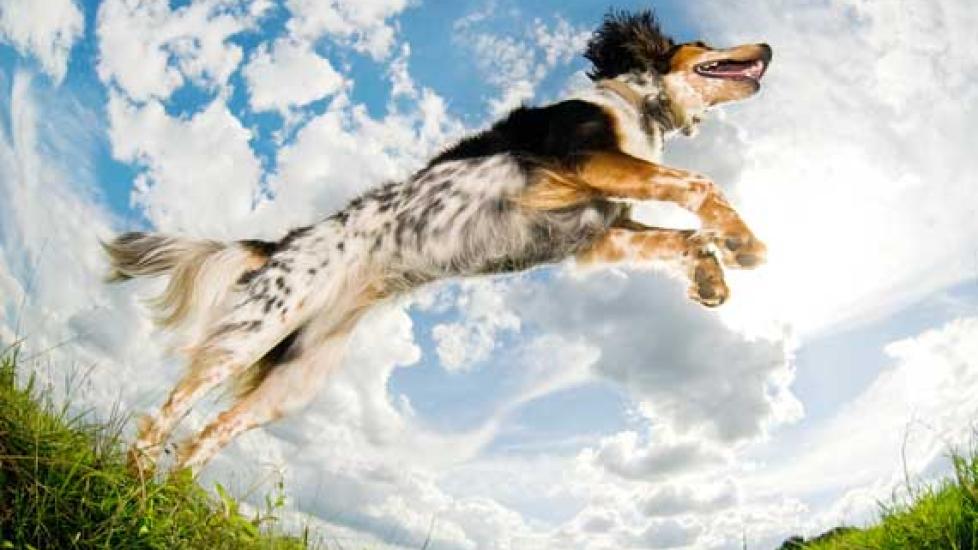Dietary Fat is Important for Athletic Dogs
I’m sure you’ve heard of the term “carb loading.” It refers to a practice, used primarily by endurance athletes, of increasing the percentage of carbohydrates in the diet a few days before an event. Carbohydrates are stored as glycogen in muscle tissue, and this is a way of increasing the amount of glycogen available to provide energy to muscles, which can help ward off fatigue.
If you are the owner of a canine athlete, you might be tempted to give carb loading a try in an attempt to improve your dog’s performance. Don’t. Dogs and people have very different muscle physiology. Research published in 1998 puts it this way:
Canine metabolism is unique. Mammalian muscle fibers have been classified into types I, IIa and IIb based on their metabolism. Type I fibers contain less ATPase activity compared with type II fibers. Types I and IIa are characterized by oxidative metabolism, whereas type IIb fibers are characterized by anaerobic glycolytic metabolism. Canine muscle contains mainly oxidative fibers…. Relative to metabolic body size, dogs also metabolize free fatty acids at twice the rate observed in humans. Dog muscle is, therefore, more adapted to use fat than human muscle and conclusions derived from human experiments may not be valid in dogs.
In dogs, carbohydrates stored as glycogen do play a role in short bursts of exertion — say, hat needed to chase a squirrel up a tree — but exercise that lasts for more than a few minutes relies primarily on fatty acids as fuel. Therefore, owners need to pay particular attention to how much fat their canine athletes consume.
Most commercially available dog foods designed for adult maintenance have dietary fat levels in the teens. Those designed for weight loss tend to be in the neighborhood of 10 percent fat or even lower for prescription weight loss foods. In comparison, diets designed for extremely active dogs may contain around 25 percent fat. (All percentages are reported on a dry matter basis.)
Increasing the fat content of a dog’s diet should be done gradually and at least a month before optimal performance is desired. It takes time for the necessary changes in physiology to occur, and sudden dietary changes, especially those that involve increased levels of fat, put dogs at risk for gastrointestinal distress and pancreatitis, which is a potentially life threatening condition.
Before putting your dog on a high fat diet, you need to take an honest look at his or her activity level. The vast majority of pets are not athletes. If your dog, like mine, is the occasional weekend warrior or trots by your side during your morning jog, a “regular” dog food is fine. A lot of exercise is needed before a dog even comes close to depleting his or her stores of free fatty acids. In fact, I suspect that most dogs would perform better eating a diet with normal amounts of fat in comparison to having to lug around the extra weight that would likely result from being switched to a high fat food.

Dr. Jennifer Coates
Image: Shev / Shutterstock
